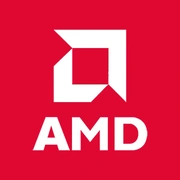AMD PRO A10-8850B

AMD PRO A10-8850B: Review of an Outdated APU for Budget Systems (April 2025)
1. Key Specifications: Architecture and Features
Codename and Manufacturing Process
The AMD PRO A10-8850B processor, released in 2015, is based on the Steamroller microarchitecture (codename Godaveri) and is manufactured using a 28 nm process. This hybrid solution (APU) combines 4 CPU cores with integrated Radeon R7 graphics.
Performance
- CPU: 4 cores/4 threads, base frequency — 3.9 GHz, Turbo Core — up to 4.1 GHz.
- GPU: Radeon R7 (512 stream processors, frequency 866 MHz).
- Cache: L2 — 4 MB.
Key Features
- Turbo Core Technology for automatic overclocking under load.
- Mantle API (outdated) for game optimization.
- AMD Secure Processor — hardware data protection.
Real-World Use: By 2025, the APU handles office tasks (Word, browser) and light gaming such as CS:GO at low settings (30-40 FPS). It lacks the power for rendering or streaming.
2. Compatible Motherboards
Socket and Chipsets
The processor uses Socket FM2+. Supported chipsets include:
- A88X (best choice: overclocking support, 8 SATA 6 Gbps ports).
- A78 and A68H (basic functions, no overclocking).
Choosing Features
- Overclocking: Possible only on A88X boards with updated BIOS.
- Ports: Look for models with HDMI/DVI for connection to monitors via integrated graphics.
- Compatibility: New boards are no longer produced. Prices for leftovers range from $40 to $60 (e.g., ASUS A88XM-A).
Important: Due to the age of motherboards, there may be BIOS issues. Check the version before purchasing.
3. Supported Memory
Type and Frequency
The APU works only with DDR3 (not supporting DDR4/DDR5).
- Maximum frequency — 2133 MHz (in dual-channel mode).
- Recommended size — 16 GB (2x8 GB).
Practical Tip: Use a dual-channel configuration to enhance graphics performance. For example, a setup with 16 GB DDR3-1866 will improve FPS in Dota 2 by 15-20% compared to single-channel.
4. Power Supply Recommendations
Power Calculation
With a TDP of 95 W and no discrete graphics card, a PSU of 300–400 W will suffice. If planning to install a GPU (e.g., GTX 1650), choose a unit rated at 450–500 W.
Examples:
- Without a discrete card: EVGA 400 W1 (around $35).
- With GPU: Corsair CX450 (around $55).
Tip: Don't skimp on the PSU. Cheap models may operate unstably under peak loads.
5. Pros and Cons
Pros:
- Integrated graphics — does not require a separate graphics card purchase.
- Low price — new processors (if available) are priced at $50–70.
- Energy efficiency for basic tasks.
Cons:
- Outdated manufacturing process — high energy consumption and heat generation.
- No support for DDR4/PCIe 4.0.
- Weak CPU for multi-threaded tasks (e.g., 4K editing).
6. Use Cases
- Office PC: Document work, video conferencing.
- Media Center: Playing Full HD video via HDMI.
- Light Gaming: Minecraft, League of Legends, older AAA titles (Skyrim, GTA V on low settings).
- Educational Projects: Programming in Python, web development.
Limitations: Modern games (Cyberpunk 2077, Starfield) even on minimal settings will run at <20 FPS.
7. Competition Comparison
AMD A10-7870K:
- Similar specifications, but without PRO features. Cheaper by $10–15.
Intel Core i5-4690K:
- Better single-threaded performance (+30% in games), but requires discrete graphics.
Ryzen 3 3200G:
- A more modern APU (12 nm, Vega 8). Twice as fast in games but costs $100–120.
Conclusion: The A10-8850B falls short even against budget CPUs from the 2020s but is suitable for ultra-budget builds.
8. Assembly Tips
- Cooling: The stock cooler is sufficient, but for overclocking, consider the Deepcool Gammaxx 400 ($20).
- Storage: Always use an SSD (e.g., Kingston A400 240 GB for $25).
- Drivers: Install the latest Adrenalin 2021 version (support ended in 2023).
- Compatibility Check: Ensure the motherboard supports TDP 95 W.
9. Final Conclusion: Who is the A10-8850B suitable for?
This processor is relevant for:
- Budget office PCs, where minimal cost is essential.
- Builds for elderly users (video streaming, internet browsing).
- Backup systems or upgrading old computers on FM2+.
Why not to buy in 2025?
- For gaming and professional tasks, better to invest an additional $50–70 to buy a Ryzen 3 3200G or Intel i3-10100.
- Lack of support for modern standards (DDR4, NVMe, USB 3.2) limits upgrades.
Final Thought: The A10-8850B is a niche solution for those who value cost over performance. In the age of DDR5 and 5nm chips, it harks back to a time when APUs were just beginning to compete for market share.
Basic
CPU Specifications
Memory Specifications
GPU Specifications
Benchmarks
Compared to Other CPU
Share in social media
Or Link To Us
<a href="https://cputronic.com/cpu/amd-pro-a10-8850b" target="_blank">AMD PRO A10-8850B</a>